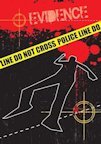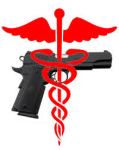In 1969 I was a caseworker for the Cook County Welfare Department, working out of the West Madison office near Garfield Park in Chicago’s West Side. The neighborhood, then and now, was considered one of the city’s more troubled areas characterized by high levels of crime and low levels of economic opportunity; not quite as bad as some other Chicago neighborhoods but not a place where I would ever feel comfortable or at home. And when I recently looked at the Chicago Tribune’s crime map, it hardly came as a surprise that East Garfield was still a place where getting shot or shot at is a regular feature of life in that part of town.
Actually, Chicago is right now enjoying a slight respite from the gun violence of the past few years with 2015 shootings running about 20% lower than in 2014. I’m not sure, however, that the word ‘enjoying’ actually fits what happened this past weekend because so far during the holiday there have been 9 killed and 32 others wounded by gunfire and Memorial Day celebration still has one more day to go. Is it actually possible that a city of 2.7 million could end up with 50 shooting victims in just 3 days? Last year, New York with twice as many people experienced 10 shootings over the holiday weekend and the media called it a “shooting spree.” When it comes to gun violence, Chicago is hardly the “Second City,” that’s for sure.
 Of course the crime numbers on Chicago’s West Side are appreciably different from where Barack and Michelle live in the South Side neighborhood known as Hyde Park. This area surrounding the University of Chicago and counting about the same number of residents as east Garfield recorded only 6 violent crimes in the past month. I suspect that crime in Hyde Park will drop even further in 2017 when the President comes home to live full-time surrounded by a phalanx of Secret Service agents complete with dogs, anti-crime patrols, choppers, the whole Presidential security bit.
Of course the crime numbers on Chicago’s West Side are appreciably different from where Barack and Michelle live in the South Side neighborhood known as Hyde Park. This area surrounding the University of Chicago and counting about the same number of residents as east Garfield recorded only 6 violent crimes in the past month. I suspect that crime in Hyde Park will drop even further in 2017 when the President comes home to live full-time surrounded by a phalanx of Secret Service agents complete with dogs, anti-crime patrols, choppers, the whole Presidential security bit.
In addition to the Obamas, Hyde Park is also home to the Chicago Crime Lab, a research and think-tank at the University supported by a who’s who of America’s glitterati foundations and various government funding sources. The Lab has published significant research on gun violence, much of the work conducted by Philip Cook and Jens Ludwig and one of their reports, Gun Violence Among School-Age Youth in Chicago, stands out as a model for public health research of this kind. The report deserves to be read in its entirety, but my self-imposed space limitation requires me to focus on only one major theme, namely, the fact that youth who engage in gun violence can usually be spotted at a very young age.
The report argues that children start to exhibit behavior that pushed them to get their hands on guns by the time they reach middle school years; i.e., the eighth grade. This report was published in 2009 but America’s foremost criminologist, Marvin Wolfgang, basically made the same argument in his remarkable book, Delinquency in a Birth Cohort, published in 1972. Wolfgang didn’t tie delinquency to gun violence per se, but you don’t have to be a rocket scientist to assume the connection between repeated delinquency, serial criminality and access to guns.
If, as Cook and Ludwig argue, behavior predictive of gun violence begins to appear at a young age, their call for interventions by school authorities and community programs lacks one vital piece. Every young child in cities like Chicago is examined by a physician at least once each year. And who better than physicians are trained to diagnose youth behavior that might create risk? When it comes to children’s health, we need to think of gun violence not just as a socio-economic phenomenon, but as a medical condition whose diagnosis and treatment should be handled by the same medical professionals who make sure that kids are immunized against measles, mumps and the flu.

Recent Comments